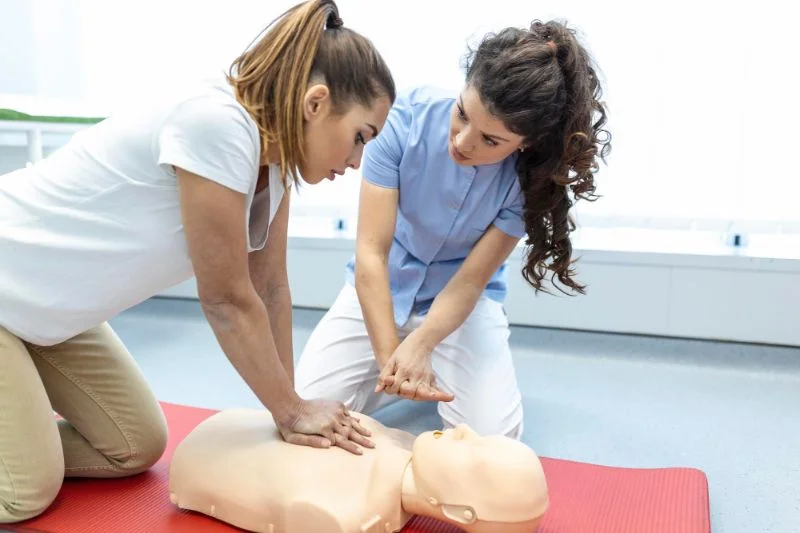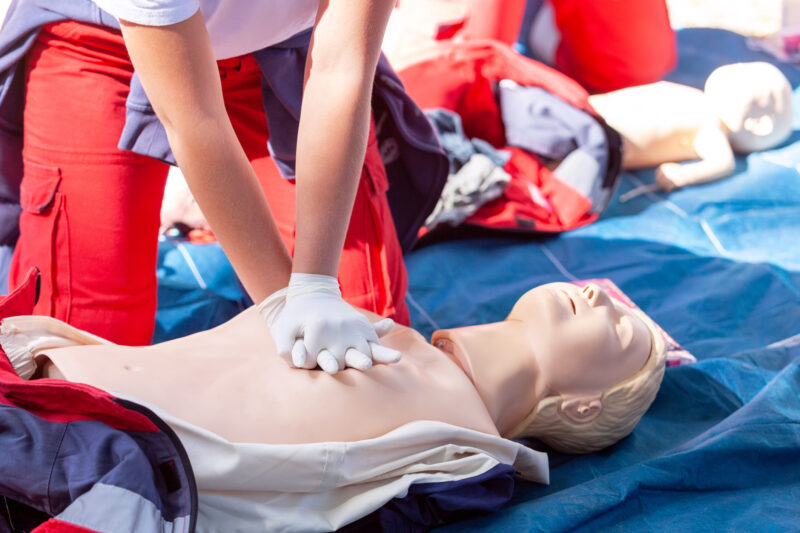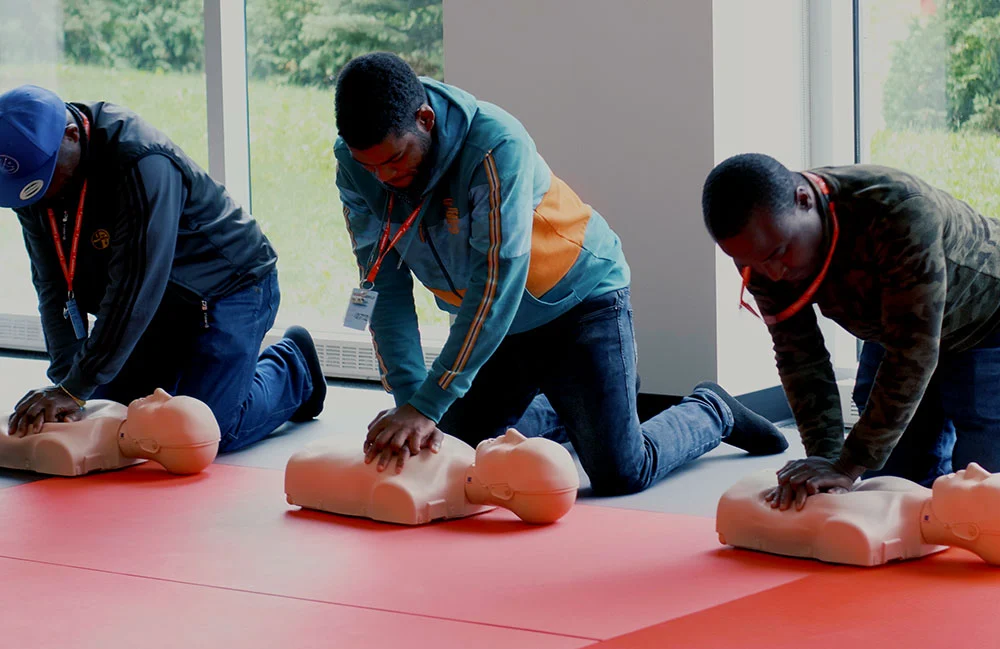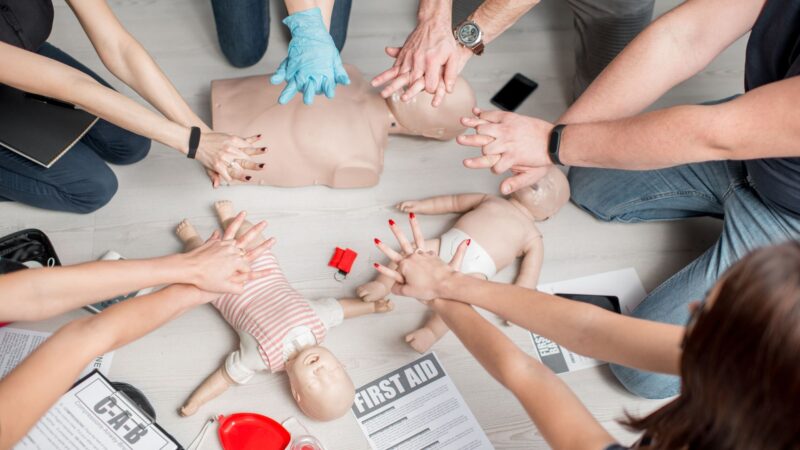Learning CPR and first aid techniques is an invaluable skill that can make a significant difference in emergency situations. Whether you’re a concerned parent, a teacher, or simply someone who wants to be prepared, knowing how to respond effectively in a crisis can save lives. One common question people have when considering CPR and first aid training is how long it takes to acquire these skills. While the time commitment may vary depending on the course and your prior experience, understanding the general timeline and what to expect can help you plan accordingly and make the most of your training.
What are the basics of this training?

CPR, or cardiopulmonary resuscitation, is a life-saving technique used to revive someone whose heart has stopped beating or who has stopped breathing. It involves chest compressions and rescue breaths to maintain circulation and oxygen flow to the brain until professional help arrives. First aid, on the other hand, encompasses a broader range of skills used to manage a variety of medical emergencies, from minor injuries to more serious conditions like choking, severe bleeding, or allergic reactions.
Training programs for CPR and first aid are designed to teach these critical skills in a clear, concise manner, often through a combination of lectures, demonstrations, and hands-on practice. As you can see on places like cprcertificationnow.com, most courses are structured to ensure that participants leave with a solid understanding of the techniques and the confidence to apply them in real-life situations. The exact length of the training can vary, but it typically involves a commitment of a few hours to a full day, depending on the depth of the material covered.
How long do the courses take?

For those focusing specifically on learning CPR, the time required is generally manageable, even for those with busy schedules. A standard CPR course typically lasts between two to four hours. During this time, participants are taught the basic steps of CPR, including how to perform chest compressions, deliver rescue breaths, and use an automated external defibrillator (AED) if available. The training also covers important topics like recognizing the signs of cardiac arrest and ensuring the safety of the rescuer.
While the course itself may only take a few hours, the skills you learn are invaluable and can be life-saving in an emergency. Some programs offer blended learning options, allowing participants to complete part of the coursework online at their own pace before attending an in-person session for the hands-on practice. This flexibility makes it easier for people to fit CPR training into their schedules without sacrificing the quality of the instruction.
First aid training is generally more comprehensive than CPR alone, as it covers a wider range of emergency situations. A basic first aid course typically takes about four to six hours to complete. This type of training teaches participants how to respond to common injuries and medical emergencies, such as cuts, burns, fractures, choking, and allergic reactions. The course also covers how to assess a situation, prioritize care, and communicate effectively with emergency services.
For those who wish to combine both CPR and first aid training, many organizations offer bundled courses that cover both sets of skills in a single session. These combined courses usually last around six to eight hours, depending on the level of detail and hands-on practice included. While this may seem like a significant time commitment, the knowledge gained can be invaluable, empowering you to act confidently and effectively in a wide range of emergency situations.
Why is hands-on practice the most important one?
One of the key components of CPR and first aid training is the hands-on practice that participants engage in during the course. Practicing the techniques on mannequins or with partners helps solidify the knowledge and ensures that you are prepared to apply the skills in a real emergency. The hands-on component is crucial for building muscle memory, which is essential when you need to act quickly and confidently under pressure.
In addition to the initial training, many organizations recommend or require periodic refresher courses to keep your skills sharp. These refresher courses are typically shorter than the initial training, often lasting only a couple of hours. They provide an opportunity to review the key concepts, practice the techniques again, and learn about any updates or changes to the protocols. Staying current with your CPR and first aid skills ensures that you are always prepared to respond effectively in an emergency.
Can the length of the training change?

While the general timeframes for CPR and first aid training are relatively consistent, several factors can influence the duration of your course. The level of certification you are seeking can play a significant role; for example, advanced courses for healthcare professionals or those required for certain job roles may take longer and cover more in-depth material. Additionally, some courses are tailored to specific audiences, such as pediatric first aid for parents and caregivers, which may add time to the training.
The format of the course can also affect how long it takes to complete. In-person courses tend to be more interactive and may include additional time for questions and discussion. Online or blended learning options, on the other hand, allow participants to complete theoretical components at their own pace, potentially reducing the overall time spent in a classroom setting. The instructor’s teaching style and the size of the class can also impact the pace of the training, with smaller classes sometimes moving more quickly due to more personalized instruction.
Learning CPR and first aid techniques is a relatively short time investment that yields long-lasting benefits. Whether you choose to focus on CPR alone or combine it with first aid training, you can typically expect to spend between a few hours to a full day gaining these critical skills. The time spent in training is a small price to pay for the ability to respond effectively in an emergency, potentially saving lives. By understanding what to expect and considering the various factors that can influence the length of the course, you can choose a training program that fits your needs and schedule, ensuring that you are prepared to act confidently and competently when it matters most.

